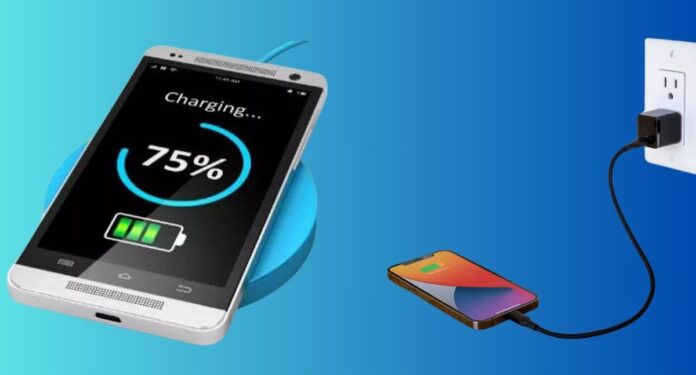Battery life informally
As cellphones become more common, battery life optimization is crucial. We check email, social media, take pictures, and save memories on our phones. Running out of batteries forces us to use power outlets or carry enormous power banks, diminishing productivity and enjoyment. Simple yet efficient strategies to extend your phone’s battery life. Setting up settings, limiting app usage, and charging properly will improve your phone’s battery life and keep it reliable throughout the day.
Switch on Adaptive Battery
With Android’s Adaptive Battery function, background app activity is limited to maximise battery life through machine learning. App battery life is adjusted based on how you use them most. Activate it under Settings > Battery > Adaptive Battery (or Battery Optimisation). This function extends battery life by preventing apps from wasting resources.
Make use of the battery-saving mode
Battery Saver option extends battery life informally by limiting performance, background activity, and unneeded features. Go to Settings > Battery > Battery Saver to enable. You can set it to activate when your battery drops below 20%. In order to significantly reduce battery use, Battery Saver mode usually limits vibration, location services, CPU performance, and background data use.
Improve the Display Preferences
Optimising the display settings on your phone can have a large influence on battery life because it’s one of the biggest drains on power. To make the screen more pleasant, go to Settings > Display and lower the brightness. If available, turn on the Dark or Night modes, which save electricity on OLED screens by turning off pixels in areas that are black. To avoid the display staying on for too long, you could also set a lower screen timeout interval (such as 30 seconds to 1 minute).
Control How Much Battery Your App Uses
Because of their usefulness or excessive background activity, certain apps may use up more power than others. Settings > Battery > Battery Usage shows the most power-hungry apps. You can restrict background activity for programmes you don’t use frequently and force stop or remove those that you don’t require. By doing this, you may be able to stop background app usage from draining your battery.
Make Use of the Battery Charging Features
Features like Battery charge Alarm and Adaptive Charging, which optimise battery charge, are now included on a large number of newer Android phones. In order to slow down battery deterioration over time, these features learn your charging habits and modify charging speeds. By way of illustration, Adaptive Charging might first charge your phone to 80% and finish it closer to the time you usually unplug it. This may contribute to an overall longer battery life.
Reduce screen brightness: Screens are major battery drainers. Lowering brightness or using auto-brightness extends battery life.
Shorten screen timeout: Turn off your phone’s screen after less inactivity.
Enable power-saving mode: Most phones’ power-saving mode decreases background activities and performance to save energy.
Reduce background app refresh: Many apps refresh even while you’re not using them. Limit background refresh for rarely used programmes.
Disable location services: They drain batteries. GPS navigation should be turned off when not in use.
Bluetooth and Wi-Fi should be turned off to save power.
Reduce push notifications: Constant notifications degrade batteries. Disable notifications for non-essential apps.
Put an end to unused connections
Particularly while not in use, as Bluetooth, Wi-Fi, and GPS can quickly deplete your battery. When not in use, make sure these connections are turned off. Toggle them on and off fast from the Quick Settings panel, or navigate to Settings > Connections to turn them off. By stopping your phone from continuously looking for and maintaining connections, disabling these connections can greatly extend the life of its battery.
Cut Down on App Notifications
Apps can wake up your phone’s processor and drain its battery with push alerts. Navigate to Settings > Apps & Notifications > See all apps, then change the notification settings for each app to reduce distractions and battery usage. You can restrict notifications to high-priority only or disable them altogether for apps from which you don’t require real-time updates.
Employ App Power-Saving Modes
These days, a lot of apps come with specific power-saving settings that might assist increase battery life. As an illustration, Google Maps includes a Battery Saver option that lowers data consumption and turns off specific features when navigating. A similar tool that reduces video quality to conserve battery life informally may be found on YouTube. To extend the life of your battery, activate these power-saving settings in the apps you use frequently.
Get the Most Recent Android Version Updated
Performance improvements, bug fixes, and battery optimisation are frequently included in newer Android versions. Look for updates for your system and install the most recent version on your device. To see if there are any updates available, navigate to Settings > System > System Update. Updating your phone can assist guarantee that you’re receiving the latest recent speed and battery optimisations.
Getting the most out of your phone’s battery is a continuous process that calls for a mix of sensible usage practices, optimised settings, and the odd hardware upgrade. You may drastically lower battery drain and extend the time that your smartphone operates smoothly by putting the above-mentioned power-saving techniques into practice.


